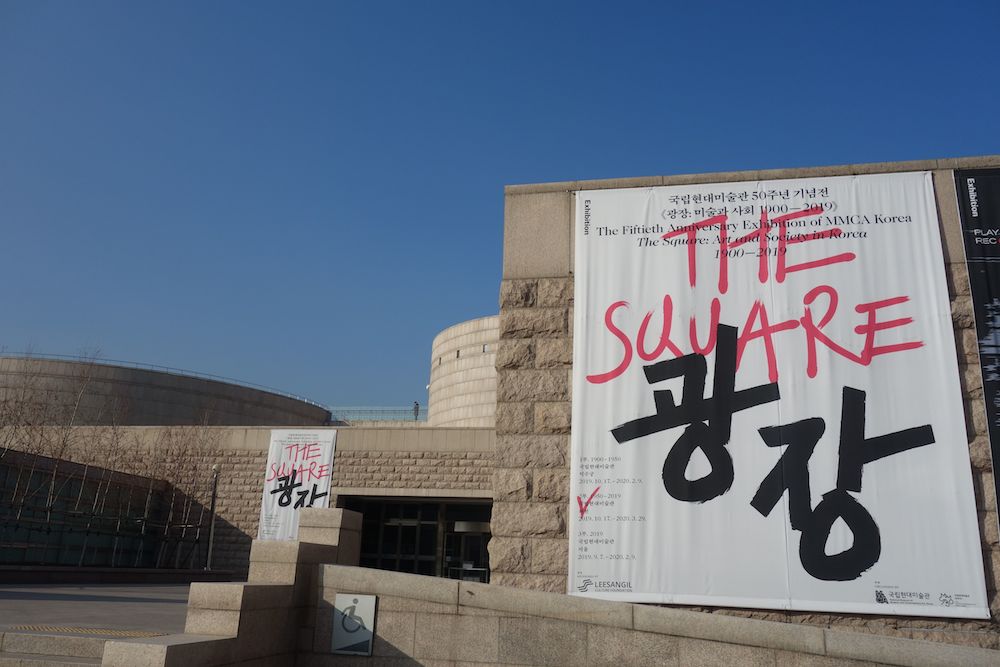
Every visitor to Seoul sees Gwanghwamun Square, stretching as it does between two major tourist attractions: at its north end Gyeongbokgung, the palace that comes in near the top of every list of the city’s must-see destinations, and at its south end Cheonggyecheon, the former freeway overpass admired by urbanists the world over since its 2005 conversion into a long, idyllic public space. Gwanghwamun Square boasts statues of the two great heroes of Korean history as currently conceived: King Sejong the Great, who created the Korean alphabet in the mid-15th century, and Admiral Yi Sun-sin, who beat back the invading Japanese in the late 16th. But in itself, it isn’t much of a destination: whenever I’ve brought visitors there, indeed whenever I’ve set foot there myself, it’s always been on the way to somewhere else.
Despite its name, Gwanghwamun Square is nothing more than a pedestrian island in the middle of a major street, separated from the sidewalks by six lanes of traffic on either side. That’s actually an improvement on the old days, back when there wasn’t even an island: movies from the 1970s and 80s like Night Journey or Chilsu and Mansu show Admiral Yi standing alone in a sea of automobiles. But being cut off from the businesses along the street — not to mention a near-complete lack of seating and shade — has kept from Gwanghwamun Square the kind of vitality American and Asian travelers envy in the squares of old Europe. Having acknowledged the deficiencies of one of its central public spaces, the City of Seoul has lately commissioned plans for a redevelopment aiming to replace some of the traffic lanes and turn the island into something more resembling a genuine square. This process has involved gathering opinions from Seoulites, with a focus on groups not often consulted: the young, enthusiasts of alternative means of transit, the disabled, even foreigners.
Hence the invitation I received to participate in a “foreigner’s forum” on the future of Gwanghwamun Square. As the only American on the panel, I figured I could contribute by discussing the many less-than-ideal public spaces of Los Angeles. Everywhere in the world, I can get a laugh by mentioning the various “squares”designated all over the city by nailing signs with the names of notables — Billy Wilder at Sunset and La Brea, John Fante at Fifth and Grand, Dosan Ahn Chang Ho at Jefferson and Van Buren — over unaltered, practically automobile-only intersections. A more relevant example is to be found in Pershing Square, fatally flawed not because of its much-derided design but because of the cars constantly entering and exiting the garage beneath it. The more recently built Grand Park provides an even closer analog to Gwanghwamun Square, what with the streets slicing it apart and cutting it off from the surrounding institutions, City Hall and the Music Center in the former case, Gyeongbokgung and the Sejong Center for the Performing Arts in the latter.
Read the whole thing at the Los Angeles Review of Books.